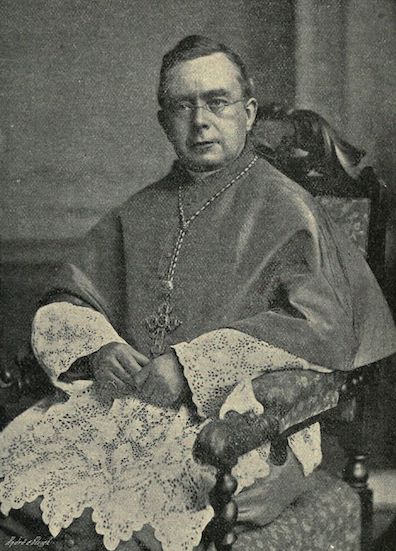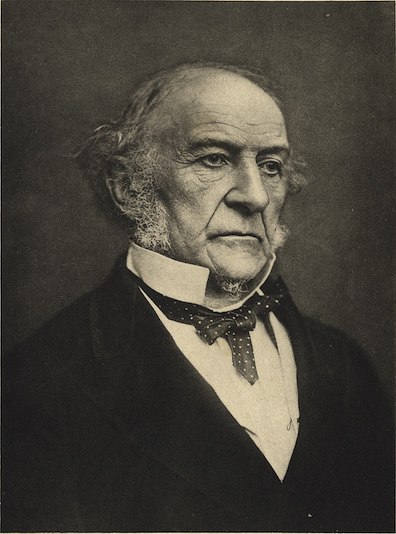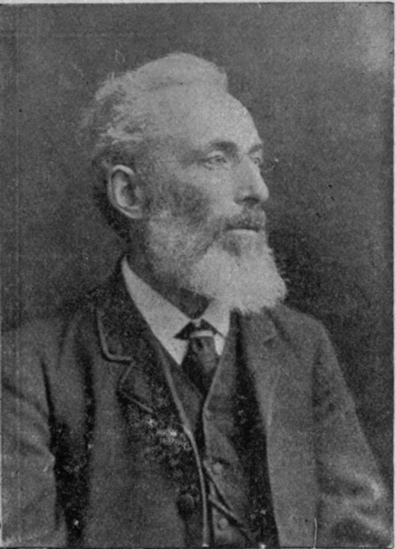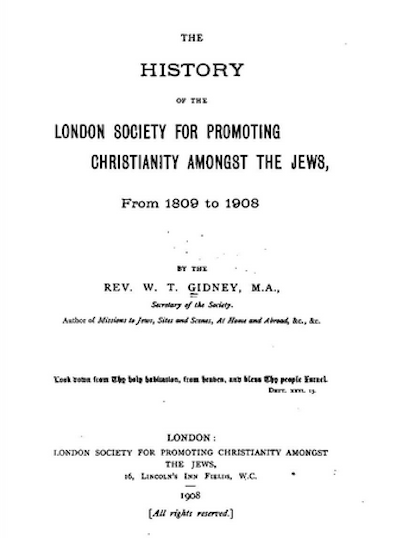In Lotus Eaters Bloom stands outside St. Andrew's
church reading a notice about a mission to convert people in
China to the Catholic faith, and it makes him think about
recruiting campaigns closer to home: "Prayers for the
conversion of Gladstone they had too when he was almost
unconscious. The protestants are the same. Convert Dr
William J. Walsh D.D. to the true religion." Hoping to
make a Protestant of William Joseph Walsh is a preposterous
idea: he had been Archbishop of Dublin since 1885. If some
enthusiasts did entertain this unrealistic hope, they were
dreaming big: such a conversion would have been a propaganda
coup of the first order. Much the same was true of Walsh's own
evident desire to see William Ewart Gladstone, one of the
leading British politicians of his day, converted to
Catholicism: the political bonanza would have been huge.
Gladstone had served as Prime Minister of the United Kingdom
for twelve years, in four different terms stretching from 1868
to 1894. As leader of the Liberals he cautiously embraced
several causes dear to Irish Catholics, including disestablishment of the Church
of Ireland, legal reforms for tenant farmers, and Home Rule. These policy
positions apparently encouraged some Catholics to hope that he
might join their fold. Gifford notes that when Gladstone lay
dying in May 1898 Archbishop Walsh wrote a letter to the
"faithful of the diocese" urging them to pray for him. The
letter did not mention conversion, "but it might easily have
been so taken since it concluded by suggesting 'a prayer that
God, in whom he always trusted, may now in his hour of
suffering be pleased to send him comfort and relief to lighten
his heavy burden, and to give him strength and patience to
bear it, in so far as in the designs of Providence it may have
to be borne for his greater good (italics added)'."
Slote cites David Williamson's biography of Gladstone as
reading the letter in the same way.
In Lestrygonians Bloom passes by a Protestant
bookshop and thinks of organizations that combine charitable
assistance with missionary outreach: "Why I left the
church of Rome. Birds' nest women run him."
The reference is to attempts to poach players from the rival
team by the Salvation Army method: feed the hungry, house the
homeless, and indoctrinate them with proper religious
principles. An organization in Kingstown called
The Birds' Nest that gave shelter to poor children had become
a generic name for groups . Bloom imagines that the bookseller
is under their sway and thinks of the kind of titles carried
in the store. Why I left the church of Rome was a 30
pp. pamphlet published in 1883 by Charles Pascal Telesphore
Chiniquy, a French Canadian who became a Catholic priest in
1833 but was suspended and excommunicated by an American
bishop in 1856. Chiniquy converted to Protestantism two years
later, becoming an evangelical Presbyterian minister in 1860.
The rest of his life (he died in 1899) was devoted to
converting other Canadian and American Catholics. He sold vast
numbers of books—more than any other Canadian author in
history, according to biographer Richard Lougheed. Gifford
observes that he was said to have converted nearly 30,000
Canadians.
The "Birds' nest" method of conversion prompts more of the
dark thoughts about food
and predation that preoccupy Bloom in Lestrygonians:
"They say they used to give pauper children soup to change
to protestants in the time of the potato blight." The
stories are hideous: in the darkest
hour of Irish history, when tens of thousands of poor
Catholic children were starving in cottages and fields,
Protestant missionaries reportedly used food to extort
submission to the faith of the ruling class. Some historians
have argued that the stories are exaggerated, but there must
be truth to these anecdotal legacies from people who "supped
the soup." In Modern Ireland 1600-1972 (1988), cited
by Slote, R. F. Foster argues that despite studies like
Desmond Bowen's Souperism: Myth or Reality? (1971) the
practice "cannot be explained away; it was bitterly remembered
by the Quaker Alfred Webb in his unpublished autobiography"
(329).
Webb (1834-1908), a Dublin-born Quaker activist who witnessed
the hard times, wrote: "Upon the Famine arose a widespread
system of proselytism, now happily almost at an end. In their
despair and misery, our poor naturally caught at any sources
of relief, and a network of well-intentioned Protestant
associations spread over the poorer parts of the country,
which in return for soup and other help endeavoured to gather
the people into their churches and schools, really believing
that masses of our people wished to abandon Catholicism....
Those who really became Protestants were few and far between.
The movement left seeds of bitterness that have not yet died
out, and Protestants, not altogether excluding Friends,
sacrificed much of the influence for good they would have had
if they had been satisfied to leave the belief of the people
alone. In matters of conversion in these countries,
Protestants are blunderingly and ineffectually above-board,
whilst Catholics are more effective and persistent, and, from
their own point of view, wise."
This insight would seem to apply fairly well to Bloom's
father, whom he recalls in the next sentences: "Society
over the way papa went to for the conversion of poor jews.
Same bait. Why we left the church of Rome." The Society
for Promoting Christianity Amongst the Jews was a London-based
Anglican organization that had a Church of Ireland branch
office on Molesworth Street,
the short lane that Bloom is about to enter "over the way"
after crossing Dawson Street. "Same bait" and "poor jews"
suggest that the lure was primarily economic. Ithaca
makes clear that Rudolph Bloom was indeed "converted from
the Israelitic faith and communion in 1865 by the Society
for promoting Christianity among the jews)," but his
subsequent actions—settling in a Jewish neighborhood and
educating his son in the rituals of Judaism—suggests that it
was no more than a matter of convenience.
Questions are also raised by Rudolph's adoption of this
particular faith. If her words in Circe can be
trusted, his bride Ellen Higgins was raised Catholic. Did
Rudolph convert before or after he met her? Did he find
nominal embrace of Protestantism easier than submitting to
rigorous Catholic instruction? Did he see material advantages
in choosing the church of the ruling class?
Fifteen to twenty years later Bloom repeated his father's act
of conversion, but from a different starting point. The
passage from Ithaca quoted above observes that "To
Master Percy Apjohn at High
School in 1880 he had divulged his disbelief in the
tenets of the Irish (protestant) church...subsequently
abjured by him in favour of Roman catholicism at the epoch
of and with a view to his matrimony in 1888." The two
dates sketch a span of time, age 14 to age 22, when the young
Bloom first questioned the teachings of his inherited faith
and then chose the church of his spouse. The example of his
father's premarital conversion from Judaism to Protestantism
might suggest that this premarital conversion from
Protestantism to Catholicism was undertaken in a purely
pragmatic spirit. But Ithaca will go on to suggest
that the situation was more complicated.
According to a later passage in the chapter, Bloom has been
baptized three times: "by the reverend Mr Gilmer Johnston
M. A., alone, in the protestant church of Saint Nicholas
Without, Coombe, by James O'Connor, Philip Gilligan and
James Fitzpatrick, together, under a pump in the village of
Swords, and by the reverend Charles Malone C. C., in the
church of the Three Patrons, Rathgar." Saint Nicholas
Without was a Church of Ireland church in the Coombe, not far from the
neighborhood where Bloom grew up. Its priority in the list
suggests that it was the site of his first baptism, which fits
with the fact that he was born into the Anglican faith. Later,
he seems to have consented to be baptized by three laymen (no
titles precede or follow their names), using water from a well
in a village north of Dublin. And then he was baptized a third
time, more formally, in the Three Patrons church in Rathgar.
Overlaying this passage on the earlier one, it seems clear
that the Rathgar baptism must have been the one undertaken "at
the epoch of and with a view to his matrimony in 1888." The
church there was Catholic, and it was located in a southern
suburb not far from where both Bloom and Molly grew up. The
outdoors Catholic baptism must have been performed earlier,
and was probably conducted by high school friends. Having
confessed his doubts about Anglican teachings "To Master Percy
Apjohn at High School," Bloom evidently let O'Connor,
Gilligan, and Fitzpatrick initiate him into the island's
predominant faith.
Clearly the conversion did not stick. Nor, for that matter,
did the Judaic practices that Rudolph Bloom tried to impart to
his son, teaching him to read Hebrew and initiating him into
rites like the Seder service.
Conducted in covert defiance of the Anglican faith in which he
had had his son baptized, this home schooling must be counted
as another conversion attempt. But in the same years when he
discarded the Church of Ireland, Bloom was also expressing
disbelief in these traditional Jewish teachings—a matter of
rebellious adolescent pride then, but a source of terrible guilt now. His attachment to the
Jewish community lasted a while longer: after their marriage,
for several years he and Molly lived close to his childhood
home on Clanbrassil Street. But now that link too is
gone. In the middle of his life Bloom makes his way in a
largely Catholic circle of acquaintances, but without sharing
their faith.




